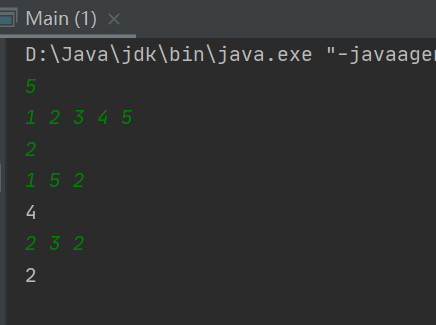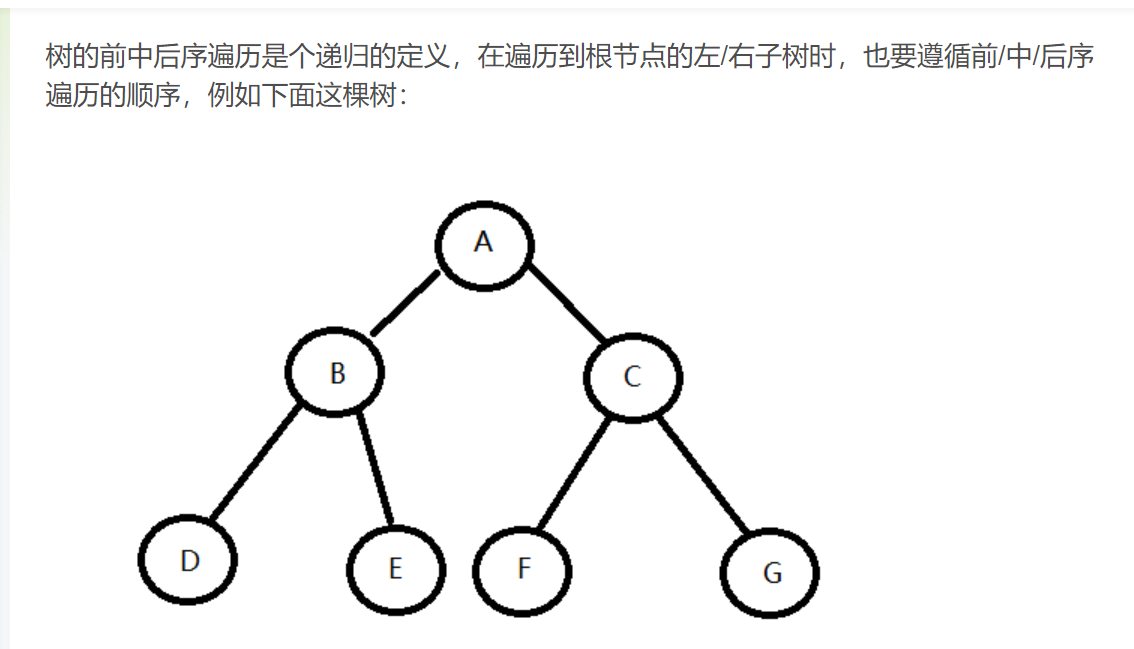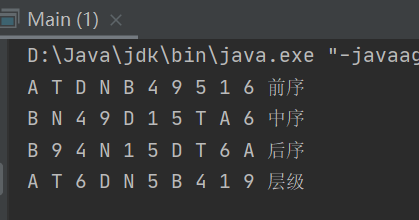2020软件工程作业04
|这个作业属于哪个课程|https://edu.cnblogs.com/campus/zswxy/2018SE|
| ---- | ---- | ---- |
|这个作业要求在哪里|https://edu.cnblogs.com/campus/zswxy/2018SE/homework/11406|
|这个作业的目标| 第一题:寻找数组中第K大的数,使用排序算法;第二题:二叉数的先、中、后序遍历与层级遍历,使用搜索算法。|
|其他参考文献|[经典算法题]寻找数组中第K大的数的方法总结 https://www.bbsmax.com/A/MAzAXmnpd9/|
第一题:寻找数组中第k大的数
解题思路

package suanfa;
import java.util.Arrays;
import java.util.Scanner;
public class Main {
public static void main(String[] args) {
Scanner sc=new Scanner(System.in);
int n=sc.nextInt();
int []a=new int [n+1];
a[0]=0;//使其他下标一致
for (int i=1;i<=n ;i++) {
a[i] = sc.nextInt();//输定给定的序列
}
int m=sc.nextInt();//输入要询问的个数
for (int i=1;i<=m;i++) {
int l =sc.nextInt();//输入从左往右第1个数
int r =sc.nextInt();//输入从左往右第r个数
int k =sc.nextInt();//输入指定K
int[] temp=new int[r-1+2];//用于存放要排序的数的数组
temp[0] = 0;
int b = 1;
for (int j =1; j<=r-1+1;j++) {//把排序的数转移到该数组
temp[j]=a[b];
b++;
}
Arrays.sort(temp);//调用sort函数啊排序
System.out.println(temp[r-1+2-k]);//输入第k大的数
}
}
}
控制台输出效果

第二题:二叉树的先、中、后 序遍历与层级遍历
解题思路


package shu;
import java.util.LinkedList;
public class Main {
/*
作业要求:叉树的先、中、后 序遍历与层级遍历
自己实现四个方法,main方法中调用,将结果打印到控制台
*/
/* 二叉树的结构
A
/ \
T 6
/
D
/ \
N 5
/ \ /
B 4 1
\
9
*/
public static void main(String[] args) {
Node root = into();
// 先序遍历
A(root);
System.out.println("前序");
// 中序遍历
B(root);
System.out.println("中序");
// 后序遍历
C(root);
System.out.println("后序");
// 层级遍历
D(root);
System.out.println("层级");
}
private static void A(Node tree) {
// TODO 先序遍历
if (tree != null) {
System.out.print(tree.data + " ");
A(tree.l);
A(tree.r);
}
}
private static void B(Node tree) {
// TODO 中序遍历
if (tree != null) {
B(tree.l);
System.out.print(tree.data + " ");
B(tree.r);
}
}
private static void C(Node tree) {
// TODO 后续遍历
if (tree != null) {
C(tree.l);
C(tree.r);
System.out.print(tree.data + " ");
}
}
private static void D(Node tree) {
// TODO 层级遍历
if (tree != null) {
LinkedList<Node> linkedList = new LinkedList<Node>();
//先将根节点入队
linkedList.offer(tree);
Node node = null;
while (!linkedList.isEmpty()) {
node = (Node) linkedList.pop();
System.out.print(node.data + " ");
if (node.l != null) {
//将出队结点的左子树根入队
linkedList.offer(node.l);
}
if (node.r != null) {
//将出队结点的右子树根入队
linkedList.offer(node.r);
}
}
}
}
// 构建一颗树,返回根节点
private static Node into(){
Node root = new Node("A");
Node node1 = new Node("T");
Node node2 = new Node("D");
Node node3 = new Node("N");
Node node4 = new Node("B");
Node node5 = new Node("6");
Node node6 = new Node("5");
Node node7 = new Node("4");
Node node8 = new Node("9");
Node node9 = new Node("1");
root.l = node1;
node1.l = node2;
node2.l = node3;
node2.r = node6;
node3.r = node7;
node7.r = node8;
node6.l = node9;
node3.l = node4;
root.r = node5;
return root;
}
// 节点
static class Node{
// 数据
Object data;
// 左孩子
Node l;
// 右孩子
Node r;
public Node(){}
public Node(Object data) {
this.data = data;
this.l = null;
this.r = null;
}
public Node(Object data, Node l, Node r) {
this.data = data;
this.l = l;
this.r = r;
}
}
}
控制台输出效果




